Project Launch on February 3rd, 2016
On Wednesday, February 3rd, 2016, the Bavarian Academy of Sciences and Humanities hosted a dynamic launch event to unveil the new research endeavor known as the Corpus der barocken Deckenmalerei in Deutschland (CbDD). Approximately 400 attendees filled the plenary hall with excitement. The event was inaugurated by Prof. Dr. Karl-Heinz Hoffmann, the President of the Bavarian Academy of Sciences and Humanities, and Prof. Dr. Stephan Hoppe, the project manager. The collaborating teams, which included the Institute for Art History at Ludwig-Maximilians-Universität Munich and the Deutsches Dokumentationszentrum für Kunstgeschichte – Bildarchiv Foto Marburg at Philipps-Universität Marburg, introduced themselves to the audience. To infuse an artistic flair into the proceedings, the event showcased performances by the Ensemble Palestra München, under the direction of Michael Eberth, and La Danza München, directed by Jadwiga Nowaczek, enchanting the audience with mesmerizing baroque music and dance.
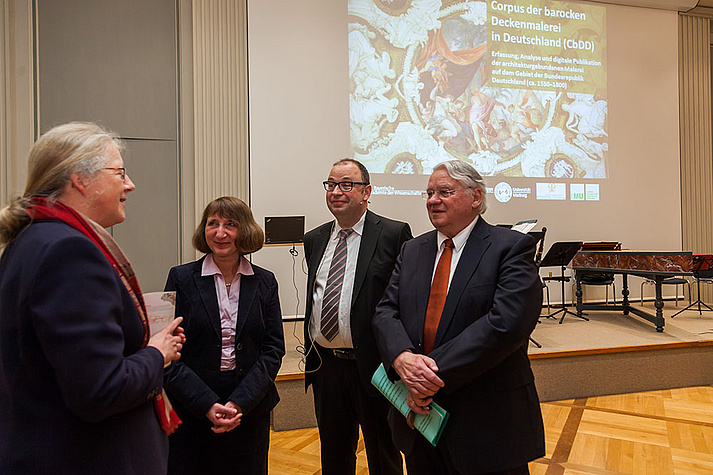
Academy President Prof. Dr. Karl-Heinz Hoffmann, Project Director Prof. Dr. Stephan Hoppe and Project Coordinator PD Dr. Ute Engel in conversation with Prof. Dr. Katharina Krause, President of the Philipps-Universität Marburg.
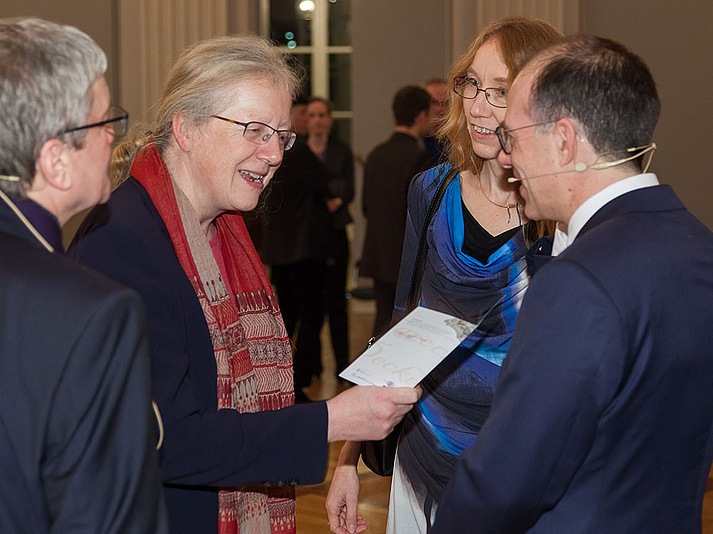
Prof. Dr. Hubert Locher (Director of the Deutsches Dokumentationszentrum für Kunstgeschichte - Bildarchiv Foto Marburg) and Werner Köhler M.A. (IT Specialist) in conversation with Prof. Dr. Katharina Krause (Universität Marburg) and Prof. Dr. Andrea Gottdang (Universität Salzburg).
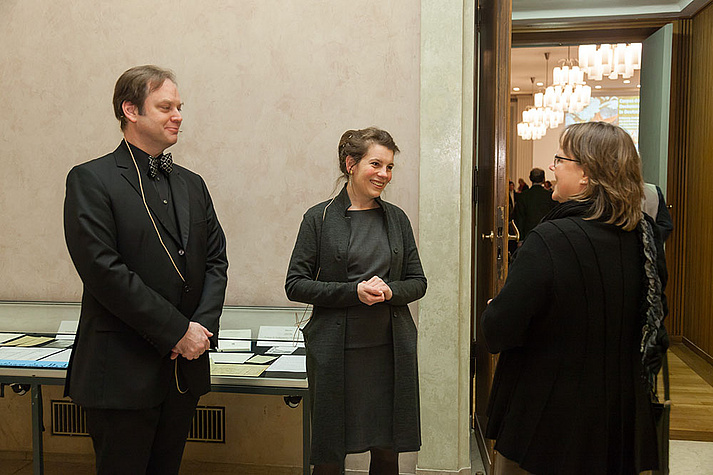
Welcoming Committee: Dr. Heiko Laß and Dr. Angelika Dreyer (Research-Team Munich).

Werner Köhler M. A. (Marburg) and Dr. Eckhart Arnold (BAdW).
In the background Dr. Christian Bracht (Director of the Deutsches Dokumentationszentrum für Kunstgeschichte – Bildarchiv Foto Marburg).
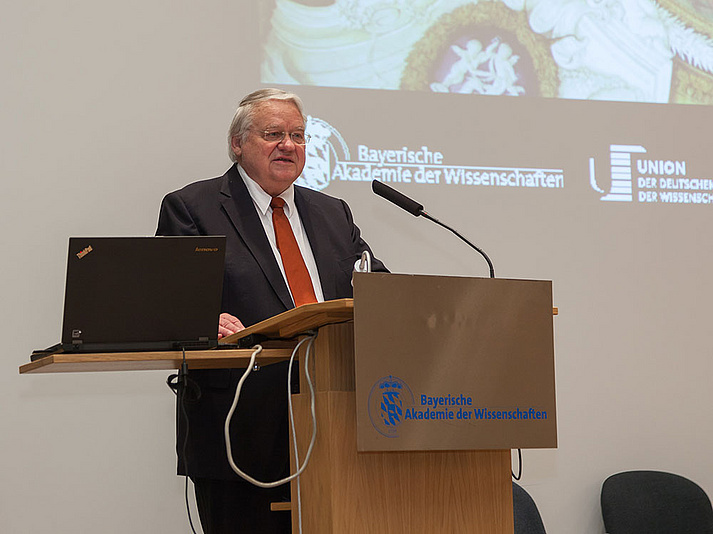
President of the Academy, Prof. Dr. Karl-Heinz Hoffmann, expressed his immense satisfaction regarding the Joint Science Conference (GWK) of the German federal and state governments' decision to allocate a significant budget of 16 million Euros to support the Academies' Programme for the scientific documentation and art historical analysis of baroque ceiling painting in Germany. This funding initiative, which commenced in 2015, is slated to extend over a 25-year duration and will be under the supervision of the Bavarian Academy of Science and the Humanities.
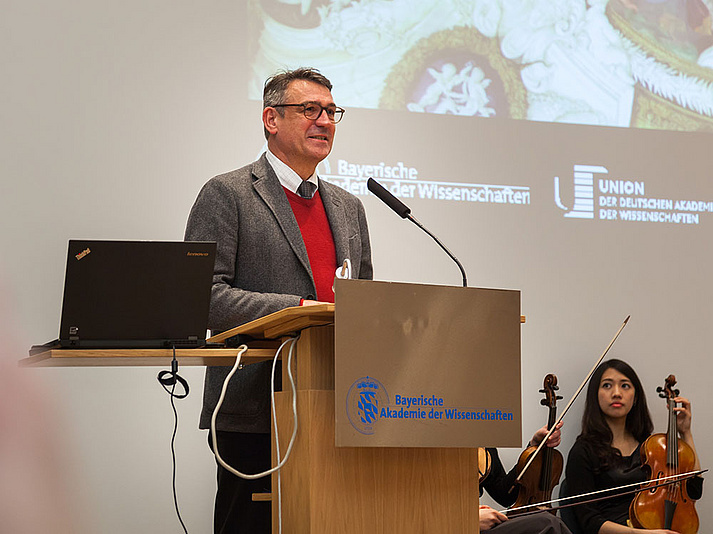
During his welcoming address, Prof. Dr. Martin Zimmermann, the Dean of the Faculty for History and Art History at Ludwig-Maximilians-Universität, highlighted the importance of using images to convey history and stories. He placed particular emphasis on the importance of this method for engaging younger audiences who might possess limited familiarity with the content, historical context, and significance of artworks.
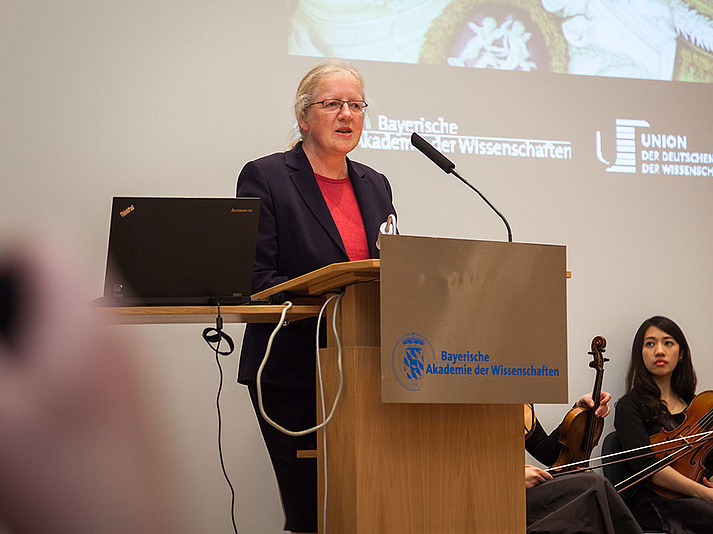
During the event, Prof. Dr. Katharina Krause, President of Philipps-Universität Marburg and an alumna of Ludwig-Maximilians-Universität, offered her insights as both a former student of the latter institution and an art historian. She delved into the history of art and ceiling painting that predates the Age of Enlightenment. Prof. Krause underscored the immense possibilities that emerge from the partnership between the universities in Marburg and Munich, along with the Bavarian Academy of Sciences and the Humanities.
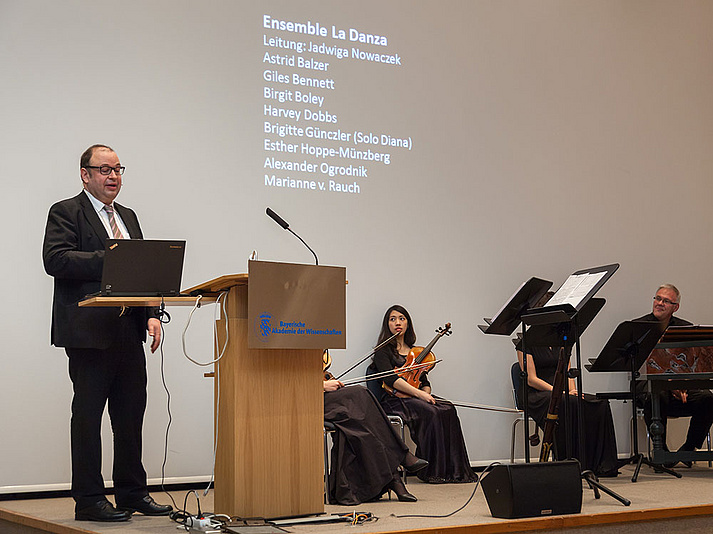
Prof. Dr. Stephan Hoppe, the Project Director, delivered a comprehensive overview of the origin, structure, and concept of the newly launched research initiative. The Corpus aims to streamline access to ceiling paintings throughout the Federal Republic of Germany. The project will advance in a typological manner, scrutinizing roughly 5,000 surviving and lost monuments of Early Modern mural painting from approximately 1550 to 1800 AD. The research will be divided into four modules: I. Courts, palaces, and residences; II. Communal and private structures of aristocratic and civic nature; III. Monasteries, priories, and cathedrals; and IV. Parish churches, pilgrimage sites, and chapels. The project's findings will be made accessible via a digital platform, ensuring widespread availability of the research outcomes.
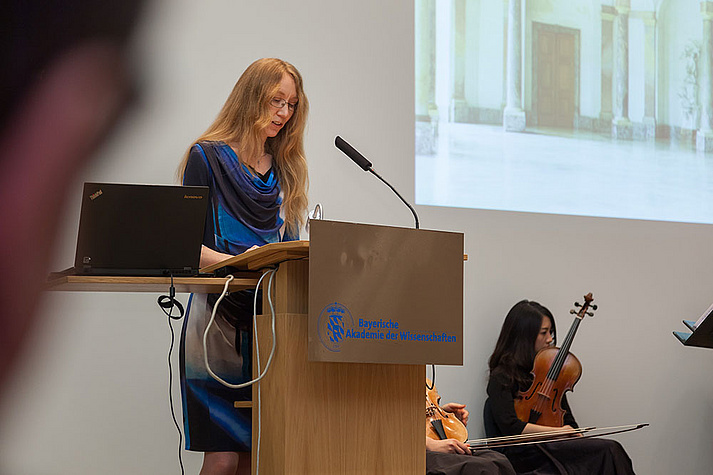
Prof. Dr. Andrea Gottdang, representing the University of Salzburg, kindly filled in for the project initiator, Prof. Emer. Dr. Frank Büttner, who, due to health concerns, could not be present at the event. Prof. Gottdang centered her discussion on an exceptional work of mural art: the frescoes created by Johann Zick and Giambattista Tiepolo in the Würzburg Residence. She illuminated the concept of a "contemporary reading" of these paintings, revealing their importance in understanding and defining the role of an early modern interior space.
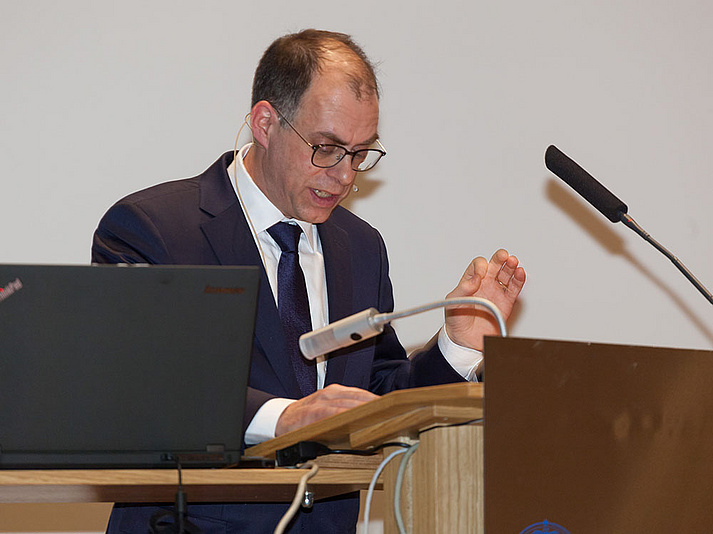
Prof. Dr. Hubert Locher (Director of the Deutsches Dokumentationszentrum für Kunstgeschichte – Bildarchiv Foto Marburg) discussed the evolution of photographic documentation techniques. He highlighted the contrast between earlier methods and the exciting new possibilities offered by digital photography. The development opened up new perspectives for understanding mural painting in the Early Modern Period. It also established a solid foundation for future generations of researchers in their exploration of this fascinating field.
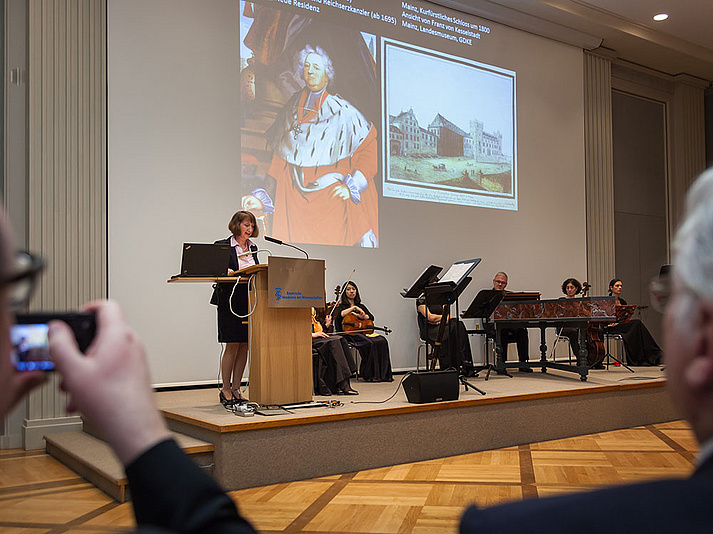
The scientific team of the new Corpus project shared three compelling case studies on the residential palaces of the Great Electors, providing valuable insights into the initial phase of research on mural painting in Germany. PD Dr. Ute Engel, project coordinator and head of the Munich team at LMU Munich, presented a pilot project focused on the Bamberg Residence. She also introduced a fresh perspective on the interior decorations initiated by Lothar Franz von Schönborn, who served as Prince-Bishop, Elector, and Archchancellor in both Bamberg and Mainz. The audience gained a deeper understanding of these significant historical sites and their artistic contributions.
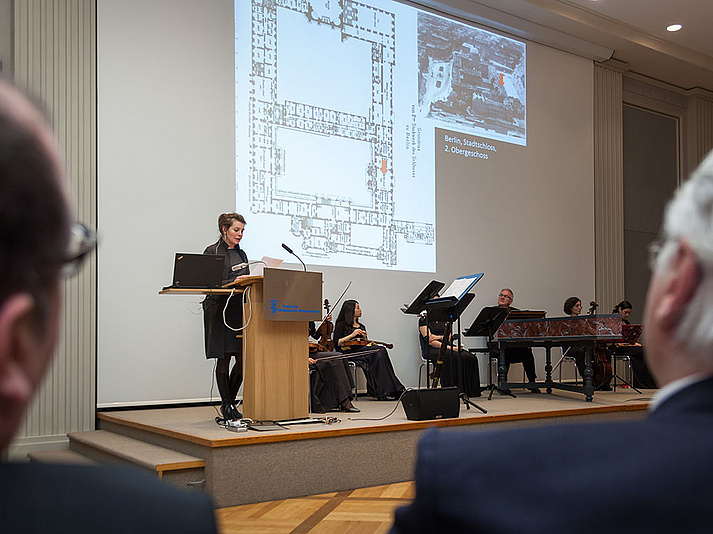
Utilizing historical photographs and various archival resources, Dr. Angelika Dreyer, hailing from LMU Munich, presented a comprehensive analysis of the vanished ceiling paintings within the Berlin City Palace. The ascendancy of the Hohenzollern dynasty, initiated by the Great Elector and further consolidated by his successor who declared himself the King of Prussia in 1701, witnessed the flourishing of mural art as a prominent avenue for visually conveying the newly acquired royal prestige. Dr. Dreyer's research unveiled the importance of these lost ceiling masterpieces that have faded into the annals of history.
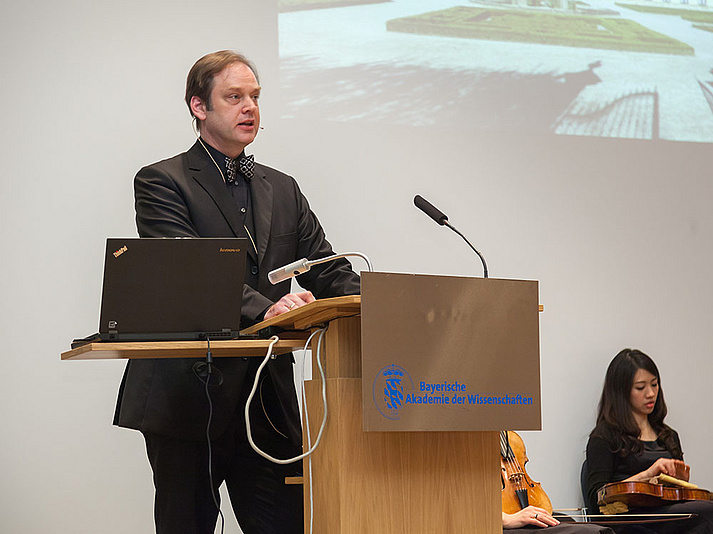
Dr. Heiko Laß from LMU Munich presented the latest findings from his research on the painted décor of Schloss Herrenhausen in Hannover. He focused on the Orangerie, which was completed in 1698 and remains the sole surviving component of a vast building project initiated by Ernst August von Hannover. Despite being a remarkable treasure of baroque ceiling painting, it has received limited attention from researchers until now. Dr. Laß shed light on this topic and shared valuable insights with the audience.
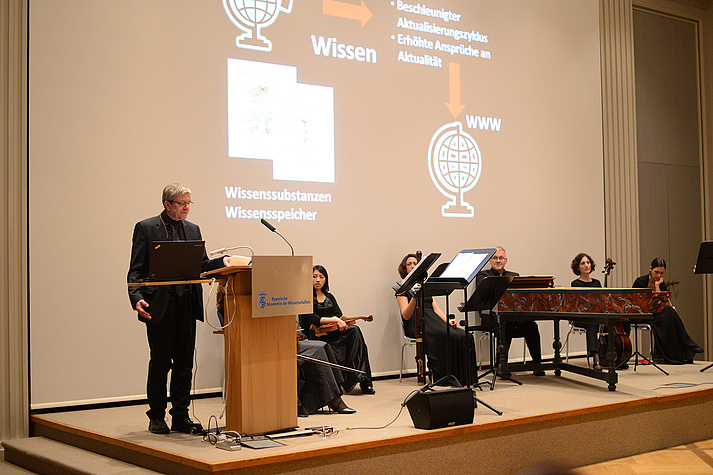
Cultural Information Scientist Werner Köhler M. A. (Deutsches Dokumentationszentrum für Kunstgeschichte ̶ Bildarchiv Foto Marburg) presented the scientific communication infrastructure 'WIssKI', a new digital research platform for the project.
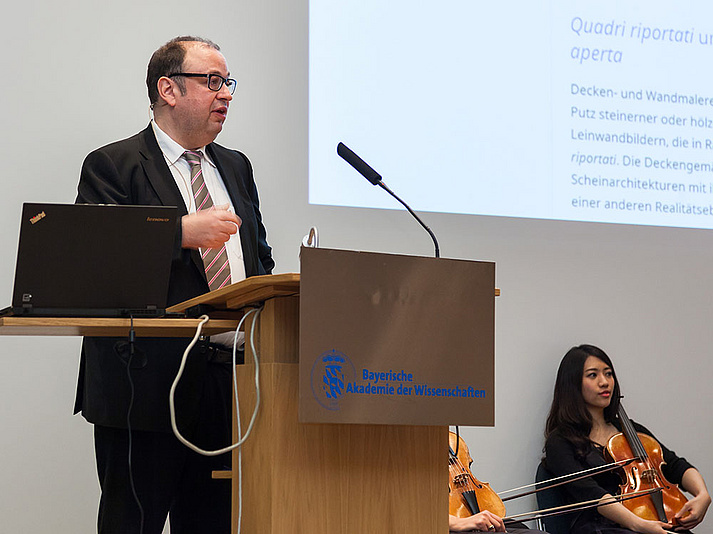
Project Director Prof. Dr. Stephan Hoppe addressed the topic of "Ceiling Painting and the Future of Digital Imaging," suggesting that the Corpus of Baroque Ceiling Painting in Germany (CbDD) aims to prioritize cutting-edge technologies in digital photography and 3D visualization. This strategic focus is intended to enable even greater benefits from the potential of digital humanities for future art-historical research on the Baroque period.
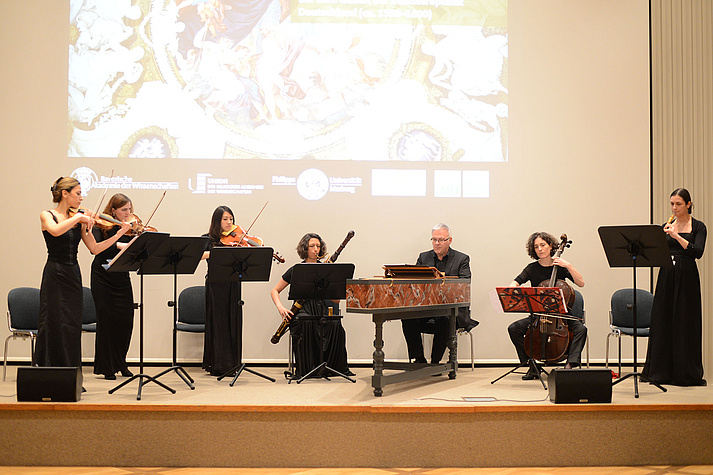
The musical framework was provided by the Ensemble Palestra as well as by La Danza München. Teachers and students of the Hochschule für Musik München also participated. They performed works by Giuseppe Antonio Bernabei (1649-1732), Henry Purcell (1659-1695) and Melchior D’Ardespin (1643-1717).
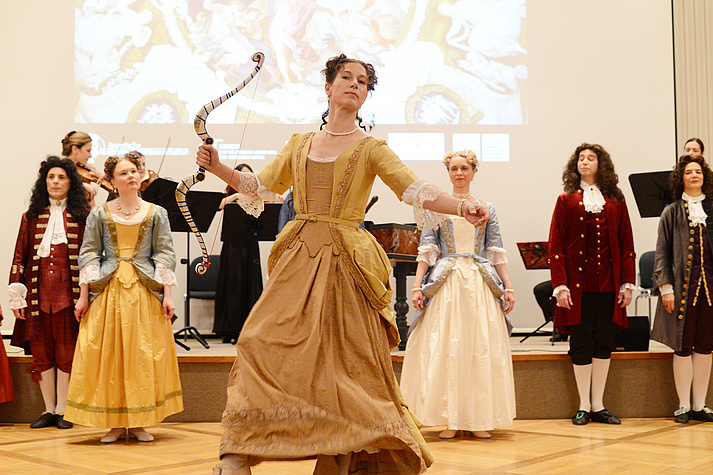
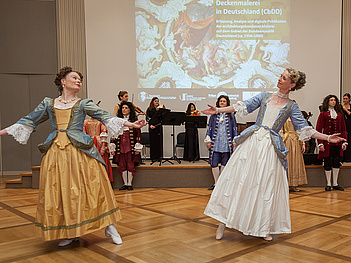
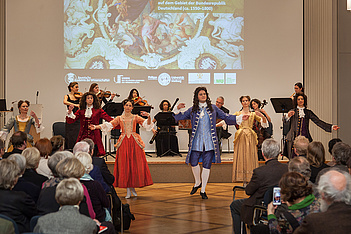
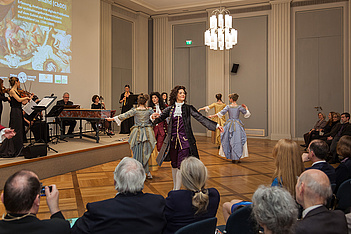


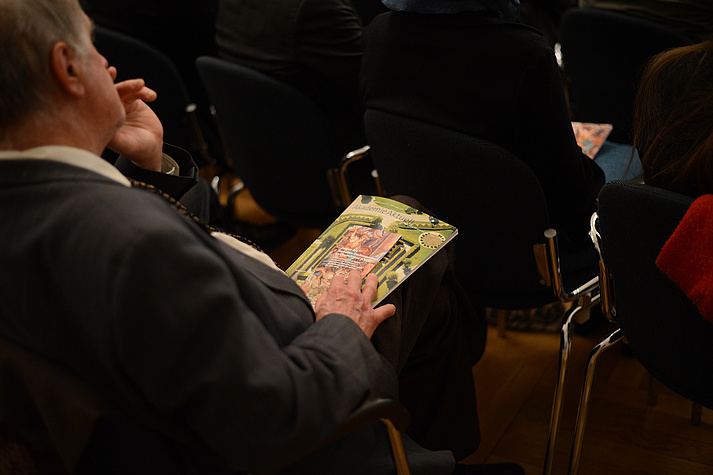
© Bildarchiv Foto Marburg, Foto: Thomas Scheidt (CbDD) und
© BAdW, Foto: Janina Amendt
